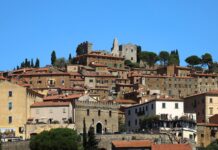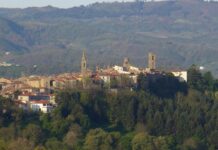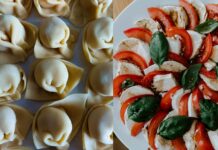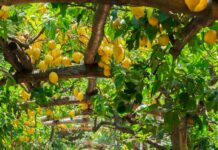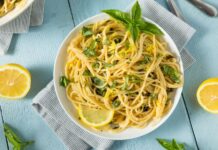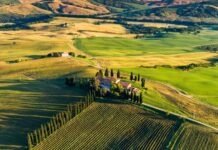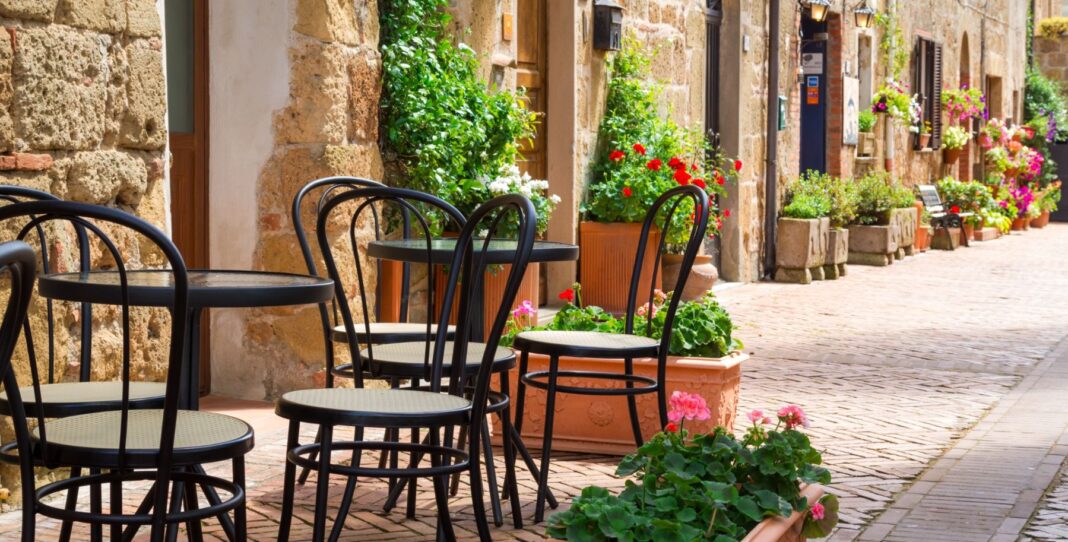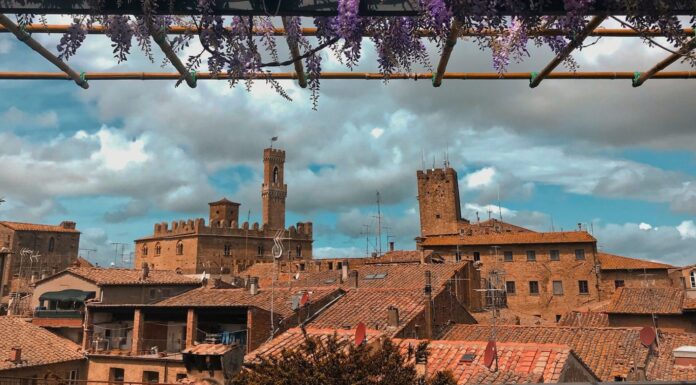Tuscan food offers a wide variety of dishes: from pasta and its unique sauces to soups, breads, and desserts, the region is rich in traditional dishes that feature the tastes and sensory wonders of their land and sea. With deep roots in the simple Italian “cucina povera,” traditional Tuscan cuisine is authentic to its ancient roots. Simple, healthy, locally accessible ingredients have carried these recipes through the ages.
Traditional Tuscan food preparations were born out of highly practical needs. Ingredients sourced locally are now a measure of quality, but for Tuscans throughout history, it was a matter of accessibility and affordability. For the delicious inventions of Tuscany’s food, we have the ingenuity of its people to thank! Recipes were created to minimize waste and allow a few ingredients to combine in the best taste profiles possible.
For example, now-classic seafood stews would be made with a mix of seafood that could be gathered on a particular day. When packed for travel or work, bread would often go stale: delicious bread soups, toasts, and porridges seasoned with simple ingredients were the remedy! Let’s explore some of these dishes!
What is Tuscan Food?
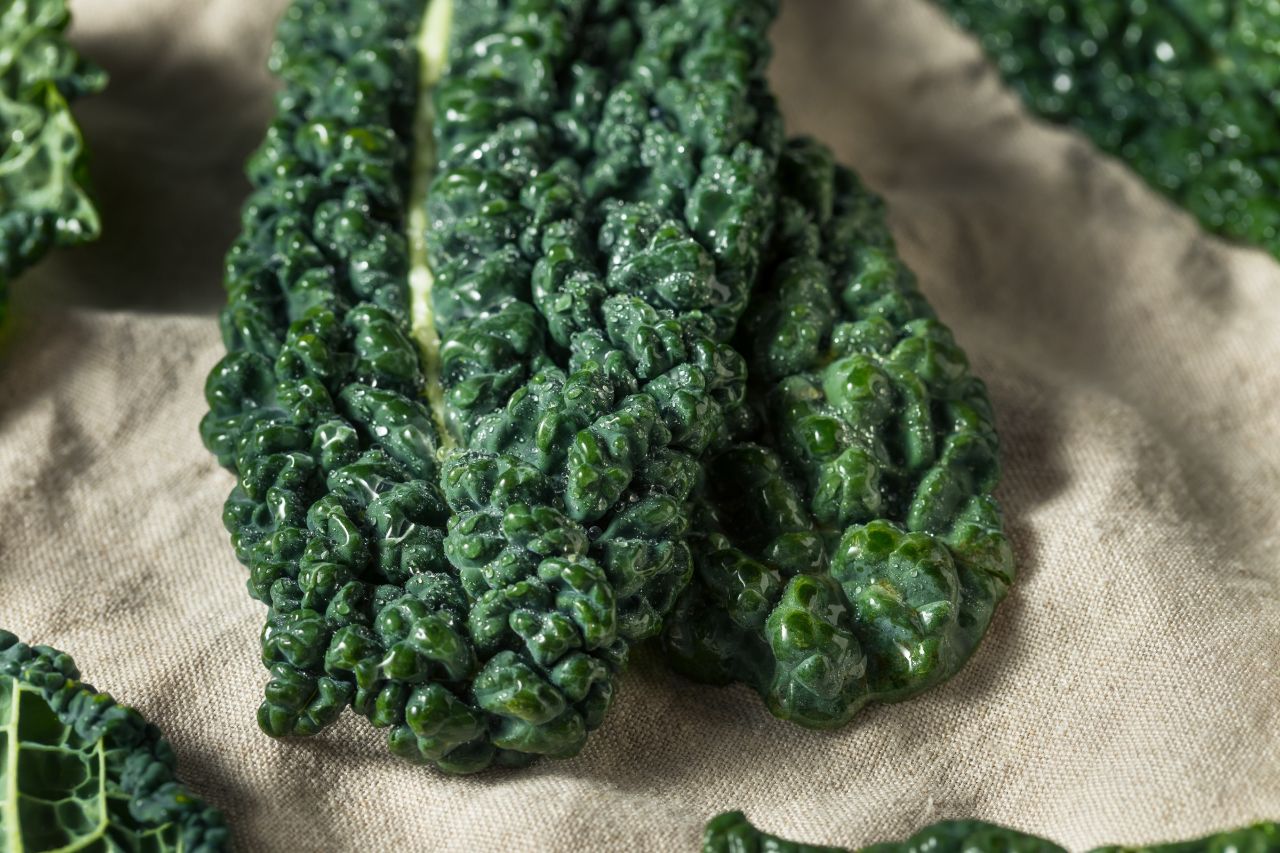
If we were to prepare a banquet of traditional Tuscan food, we would find ourselves with a table full of simple but flavorful dishes made from very local ingredients. In many cases, vegetables or other ingredients could be interchanged in a recipe, but the preparation process and seasonings remained the same. Historically, the foods were prepared this way because it was what was affordable and accessible – the tradition of the cucina povera. People were able to use whatever humble food they had at hand to feed their families, and preparations were able to be passed down through the generations.
Nowadays, we are more likely to have more ingredients at our disposal, and yet we still come back to the classic simplicity of the Tuscan peasant kitchen. Why? Modern chefs and foodies know that local food is the freshest option and that the quality of ingredients is what matters most in a recipe. For this reason, Tuscan cuisine remains popular for families in Tuscany, tourists, foodies, and the international dining scene alike!
Let’s take a closer look at how some traditional Tuscan dishes are prepared.
10 Traditional Tuscan Dishes
1. Cacciucco
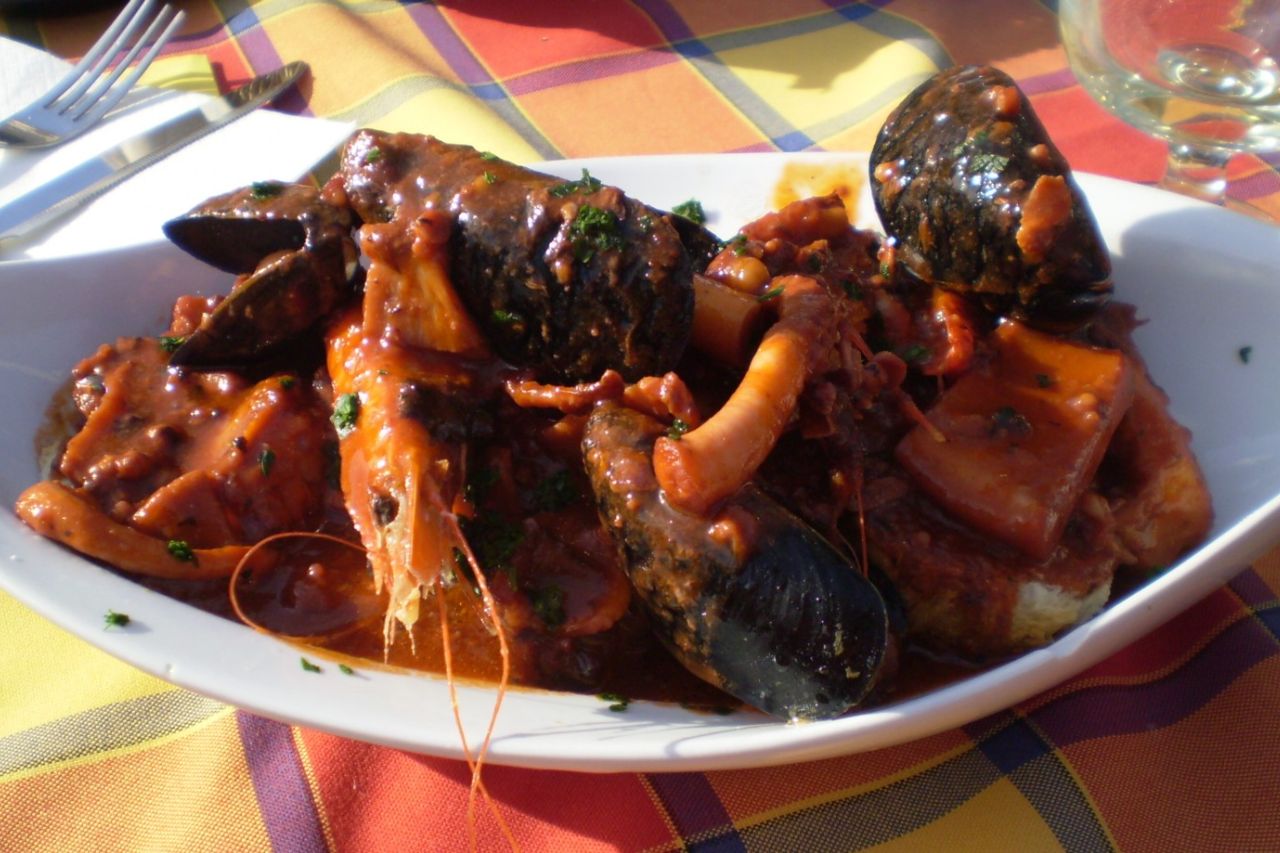
Popular in the coastal towns of Tuscany and particularly associated with Livorno, cacciucco is a traditional Tuscan seafood stew made in a vegetable or fish-based broth and containing a mix of Mediterranean fish and shellfish. Some say it must contain five different types, one for each “c” in the word! The specific ingredients will vary based on the specialties of the area.
The origins of this dish are said to come from the lands to the east of Italy, and the origins of the word “cacciucco” tracks – it’s thought to have come from the Turkish word kaçukli for “odds and ends” referring to the flexible mixture of ingredients.
There is also an Italian-American variation of cacciucco that is called cioppino, from the word for cacciucco in the dialect of Genova: ciuppin. Cioppino was created in the mid-1800s by Italian-American immigrant fishermen in San Francisco, many of whom came from the port city of Genova/Genoa in Tuscany.
2. Pappardelle al cinghiale
Pappardelle is a broad, flat pasta – similar to the more diffused fettuccine – which is of great importance in the cuisine of Tuscany. This preparation of the pasta originates in Siena, and the al cinghiale indicates it’s prepared in a sauce, or ragù, made from slowly simmered cinghiale, or wild boar meat (a staple of the Tuscan diet). The strong flavor of the meat really carries this dish, and its sauce is seasoned with classically-Italian simple ingredients: red wine, carrot, onion, celery, olive oil, tomatoes, and spices.
Pappardelle al cinghiale is even considered the “national” dish of the region of Tuscany, and the wild boar is considered to be of great importance to the region. The hunting season for the boars remains a strong tradition in the countryside villages, and usually takes place between October and January. Recipes with boar meat are thus usually eaten seasonally as a winter dish.

3. Pici all’aglione
Aglio is the Italian word for garlic, and aglione is a big garlic! This variety of garlic has been cultivated in Tuscany’s Val di Chiana since ancient times and is the flavor centerpiece of this Tuscan dish and sauce from Siena.
Pici all’aglione is made by slowly sautéing garlic cloves until they get soft enough to be smashed into the olive oil, mixed with tomatoes and hot pepper. The sauce is served over pici, a long spaghetti-like Tuscan pasta that is made without eggs: just water, salt, olive oil, and flour.
Read also: Pasta In Tuscany – Deliciousness You Have To Try To Believe
4. Torta di Ceci (Also Known As “Cecina”)
With origins and local variations along the entire Ligurian Sea coast, from South Eastern France, to Sardinia, to Tuscany, the torta di ceci is a flatbread “pancake” type of bread made from chickpea flour. The name means cake of chickpeas (aka garbanzo beans).
To make this simple recipe, all that’s needed is chickpea flour, olive oil, water, and salt. In Tuscany, it is most often called cecina, and it is sometimes seasoned with rosemary on top. The outside is quite crunchy and crispy, but the inside remains deliciously soft. In Livorno it is traditionally served between two pieces of bread, and in the area of Pisa it is served inside a piece of focaccia. Legend has it that the first torta di ceci was made by Roman soldiers by cooking chickpea flour on their shield!
Read More: Northern vs Southern Italian Food – 14 Rich Culinary Delights
5. Panzanella
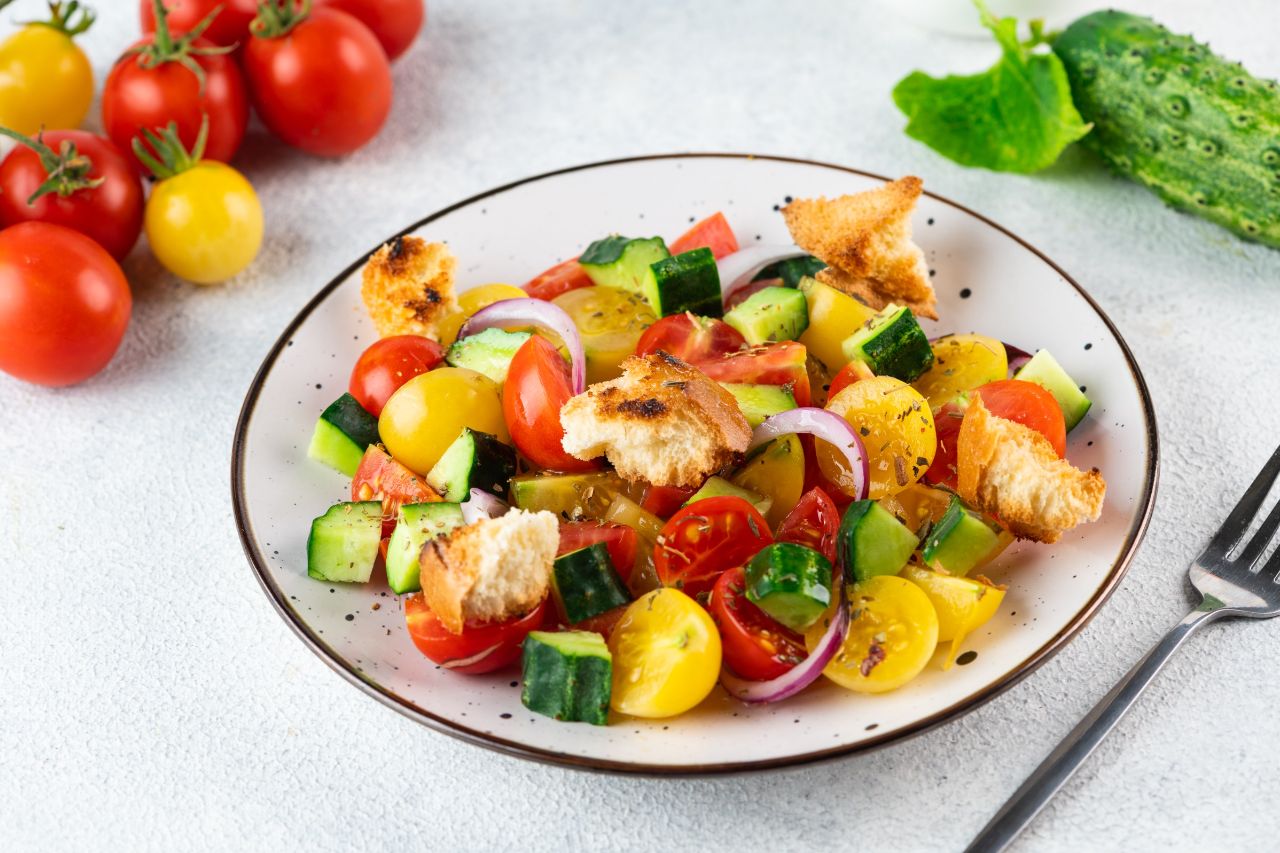
It is a bread salad that is considered a classic of Tuscan cuisine. Common in the Mediterranean region, bread salads offer a use for dried stale bread. Panzanella is one of the many traditional recipes created as a way to eat bread that had gone stale, offering solutions for when it was packed for days spent away from home. Workers and travelers were able to pack bread for long days away from the ovens, and yet still eat well. Nowadays, bread intentionally dried out in the oven is sometimes used in these preparations instead.
It is traditionally made with tomatoes, onions, bread, and an oil and vinegar dressing. Some contemporary variations include cucumbers and basil, as well as other summer vegetables.
6. Acquacotta
A tradition of the peasant kitchen, acquacotta means “cooked water,” and dates back to ancient times in the coastal Maremma region of Tuscany. Acquacotta offers another way to use dried or stale bread. The broth is made with olive oil and the miscellaneous vegetables that grow easily in the region and so could historically be found in abundance – especially onion and tomato. The bread is then cooked in this broth as a method of rehydrating and softening it for eating.
7. Ribollita
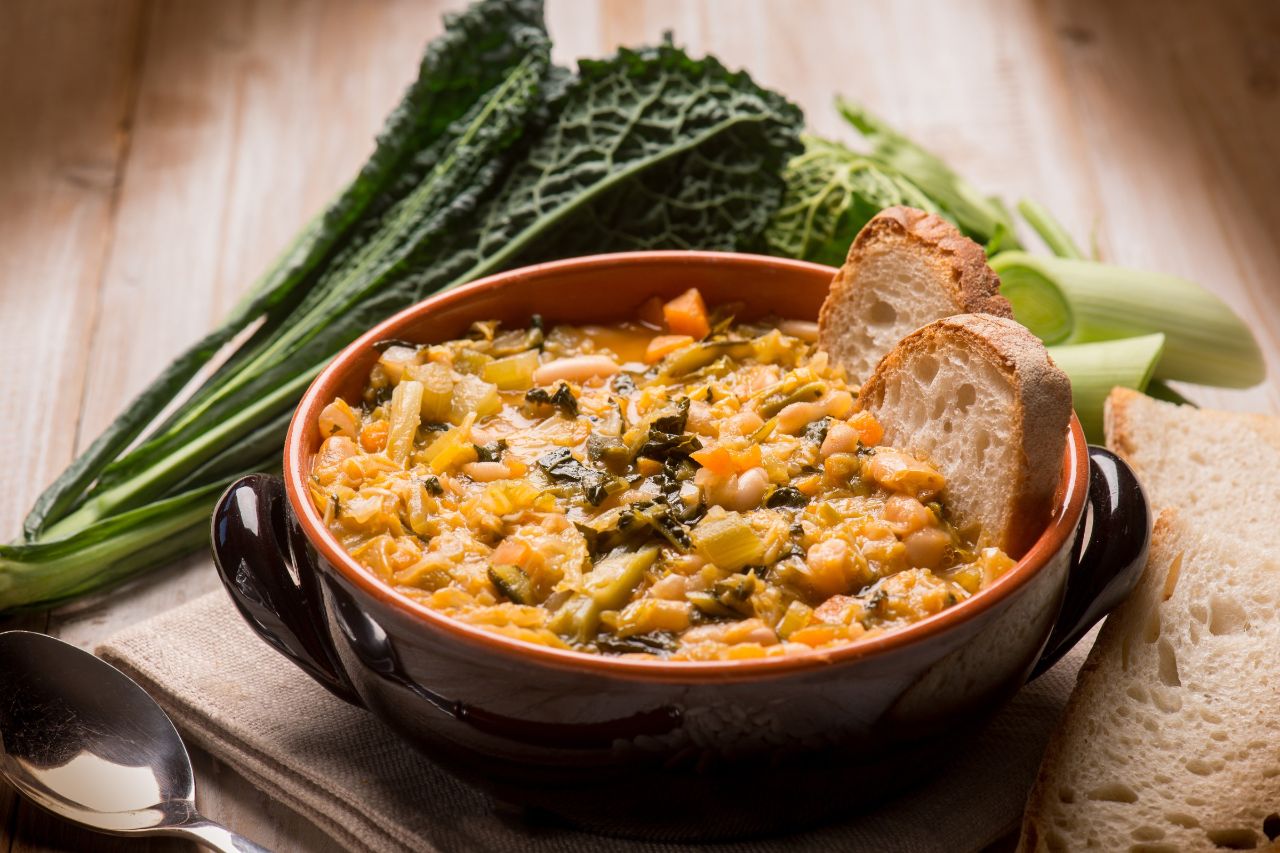
Ribollita is similar to a bread soup, but, as the name suggests, it is cooked, or rather boiled, twice: ribollita means reboiled. One possible origin of this famed second cooking is from the Middle Ages, when nobility sometimes ate off of trenchers, or edible plates made of bread either consumed or offered to the poor after dining. The servants of the house would gather the trenchers and reboil them for their own dinner after the lords’ banquets.
Usually made with bread, Tuscan cabbage (lacinato kale) or another local leafy green, and some variety of beans, the soup is drizzled with olive oil after being boiled a second time and served warm. Typically the vegetable soup is made on the first day, and then the bread is added on the second day when the soup is reheated. Tuscan leftovers!
8. Bistecca alla fiorentina

This Florentine steak is a classic preparation of steak in Italian cuisine internationally. Made from a young steer or heifer cow, it was traditionally prepared with the style of a porterhouse steak (“cut from the rear end of the short loin and thus include more tenderloin steak, along with a large strip steak”) and grilled over an open flame. The origins of this preparation may trace back to the cooking bonfires in Florence at a Medici Family celebration of the Feast of Saint Lawrence, where English knights were perhaps served the steak and called it “beef steak” which became “bistecca.”
9. Crostini Toscani

A classic antipasto, or pre-meal course, Tuscan crostini (toasts) are made with toasted bread and a chicken liver pâté. In the historic peasant kitchen, these offered yet another way to prepare bread that has lost its freshness: the pieces of bread were first dipped in broth to soften then, and then covered in the live pâté adding a contrast to the crunch of the bread. The pâté is prepared with carrots, onions, celery, and broth – as well as perhaps anchovies, capers, or wine.
10. Pappa al Pomodoro
This tomato and bread soup is more like a bread porridge or stew, as it has heartier consistency (pappa is “mush,” such as a baby food). Pappa al pomodoro is made by simmering the dried or stale bread in a tomato sauce until it is soft and full of flavor. can be served hot, room temperature, or cold. It’s the topic of the catchy song “Viva la Pappa col Pomodoro” which sings its praises: Hurrah for the pappa pappa/ With the po-po-po-po-po-po-pomodoro / Hurrah for the pappa pappa / What a ma-ma-ma-ma-ma-masterpiece.
Tuscan Desserts
1. Cantuccini
The Tuscan ancestor of the famed and dispersed Italian-American “biscotti,” cantuccini are crunchy cookies that are baked twice, which creates their signature crunch. First, they are baked with the dough in a log formation. Then, while the dough is still soft, they are removed from the oven and sliced into smaller pieces. Those pieces are then placed out evenly on a cookie sheet and baked a second time. Traditionally flavored with lemon zest and almond, you can find lots of flavorful variations of this cookie nowadays!

Read more: Tuscan Desserts – Sweets, Cookies, Cakes, and Wines!
2. Castagnaccio
Castagnaccio is a classic cake made with chestnut flour and flavored with olive oil, raisins, pine nuts, walnuts, and rosemary. Dating back to the peasant kitchen of the 1500s, it is quite popular in many regions in Northern Italy where chestnuts are plentiful and chestnut flour is easy to access! This cake pairs beautifully with honey or ricotta cheese, and is also often eaten with the sweet Tuscan wine Vin Santo.
3. Ricciarelli
The next three desserts are all Sienese in origin! Ricciarelli are dense and chewy Tuscan macaroons. The idea for this cookie is said to have been brought to Tuscany by a knight, Ricciardetto della Gherardesca, upon his return from the Crusades. According to another legend, their name comes from the word riccio – for “hedgehog” – and their crinkled powdered-sugar-dusted appearance certainly bears some resemblance to the back of a hedgehog!
4. Panforte
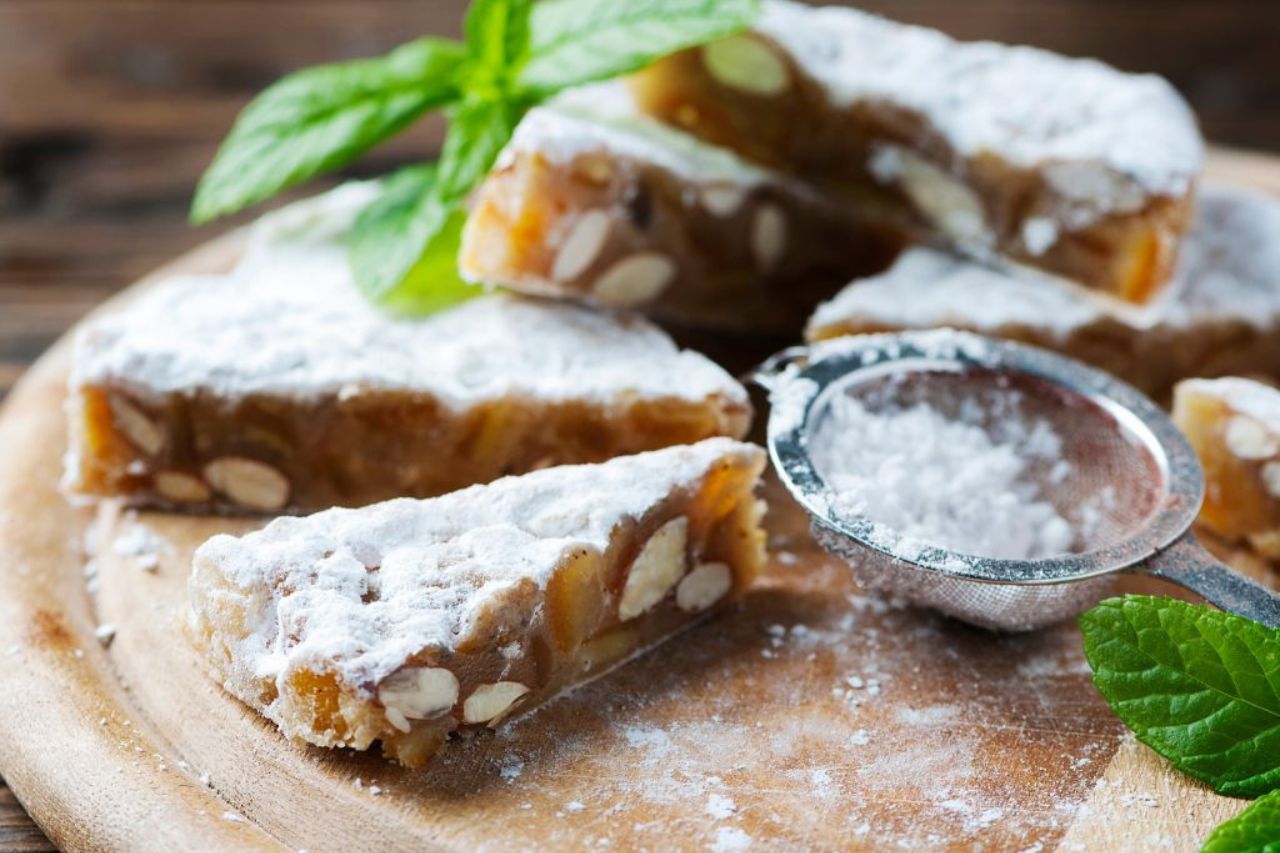
Named “strong bread,” panforte has a strong flavor that comes from a mix of fruits, spices, and nuts. Today the fruits in the recipe are typically dried, but historically they were cooked fresh into the cake in such a way that caused them to ferment. This would further explain the reference the name bears to a break with a strong flavor. In fact, the original name likely came from the Latin Panem Fortis meaning “sour bread” – like something fermented.
In 1879, a special variety was prepared by an important pastry chef for Queen Margherita of Savoy, using a standard 17 ingredients. This came to be known as the Panforte Margherita, which is still well-loved today.
5. Copate
Credit for the creation of the cookie called copate goes to the nuns at the convent of Montecelso, in Siena. When important guests visited their convent, according to legend, the nuns prepared this cookie for them. Now considered a Christmas cookie, copate are built like a thin sandwich cookie: two wafers on either side, and a nougat in the center flavored with honey, hazelnuts, and almonds.
Check out more in our previous post about Tuscan desserts!


